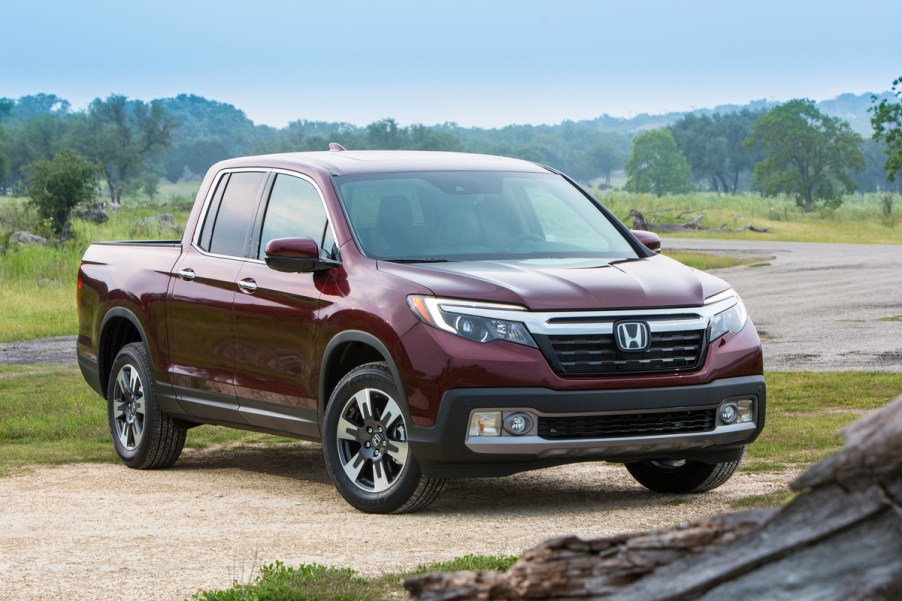
How Safe Is the Honda Ridgeline?
The 2019 Honda Ridgeline has had a rough start since it was unveiled in 2018, despite high marks when compared with the popular Toyota Tacoma and Ford Ranger. With rather less popularity among hard-to-win truck consumers than Honda may have hoped for, the Ridgeline received accolades from critics, who found it to be both reliable and practical.
The design features an innovative combination of crossover SUV and pickup truck with ample interior space and superior maneuverability when compared with other pickups. However, the Ridgeline’s standard technology and safety features leave something to be desired. That said, if you’re willing to shell out for advanced safety features on higher trims, you will find that the Ridgeline ranks at the top of its class.
IIHS 2019 Top Safety Pick
According to the Insurance Institute for Highway Safety, the Honda Ridgeline was awarded the top safety pick for the large pickup/ crew cabin pickup category. It performed well in every respect, with the exceptions of passenger-side airbags, child seat anchors, and headlights for the higher trims.
While the test concluded that the passenger survival space was well maintained by the passenger-side airbags, the dummy’s head slid to the right of the activated airbag during the test, which could result in the passenger’s head making contact with the dashboard in the event of an accident. In addition, IIHS test concluded that there is risk of significant potential damage to the passenger’s knees and lower legs and rated both the passenger side airbag and passenger lower leg/foot protection Marginal, which reduced the passenger side rating to Acceptable.

IIHS also displayed some concern about the configuration of the child restraints, particularly in the center back seat of the vehicle. The restraints were difficult to find, too deep in the seat, and easy to confuse with other hardware. The center child seat restraints received a Marginal rating, and those on either side were Acceptable.
The most surprising negative issue pertained to the headlights for higher trim levels RT and up. The headlights were rated Poor, the lowest possible designation, due to inadequate visibility on both sides of the road both in low and high beams.
Overall, the Ridgeline’s safety features held up well under IIHS scrutiny, with a superior optional collision mitigation braking system and sensing system available for higher trims.
NHTSA Honda Ridgeline Safety Ratings
Like the IIHS, the National Highway Traffic Safety Administration gave the 2019 Honda Ridgeline a five-star overall safety rating, which included five stars each for frontal, side, and side pole crash ratings. It fell a little short of perfect with a four-star rating for rollover resistance, but NHTSA indicated a confident no-tip result with a rollover risk of only 16.9%.
The Ridgeline’s perfect score is marred only by its lack of available standard safety features. Forward collision and lane departure features are available only in upgrades, and there is no option for crash imminent braking or dynamic brake support. With competition stiff in the pickup market and high-tech contenders like Toyota and Ford in the running, Honda can’t afford to skimp on the technology if they want to compete with the established pickup favorites.
Safe and reliable, but can it compete?
Overall, the Honda Ridgeline exhibits excellent safety ratings, especially with regards to collision-related features including restraints and airbags. Its high safety rating and long-term reliability make the Ridgeline a good choice for a family pickup. The Ridgeline’s extra interior space and the added load capacity of a pickup make it unique, but it will need to improve it’s standard-level safety features if it wants to compete with current industry leaders.


